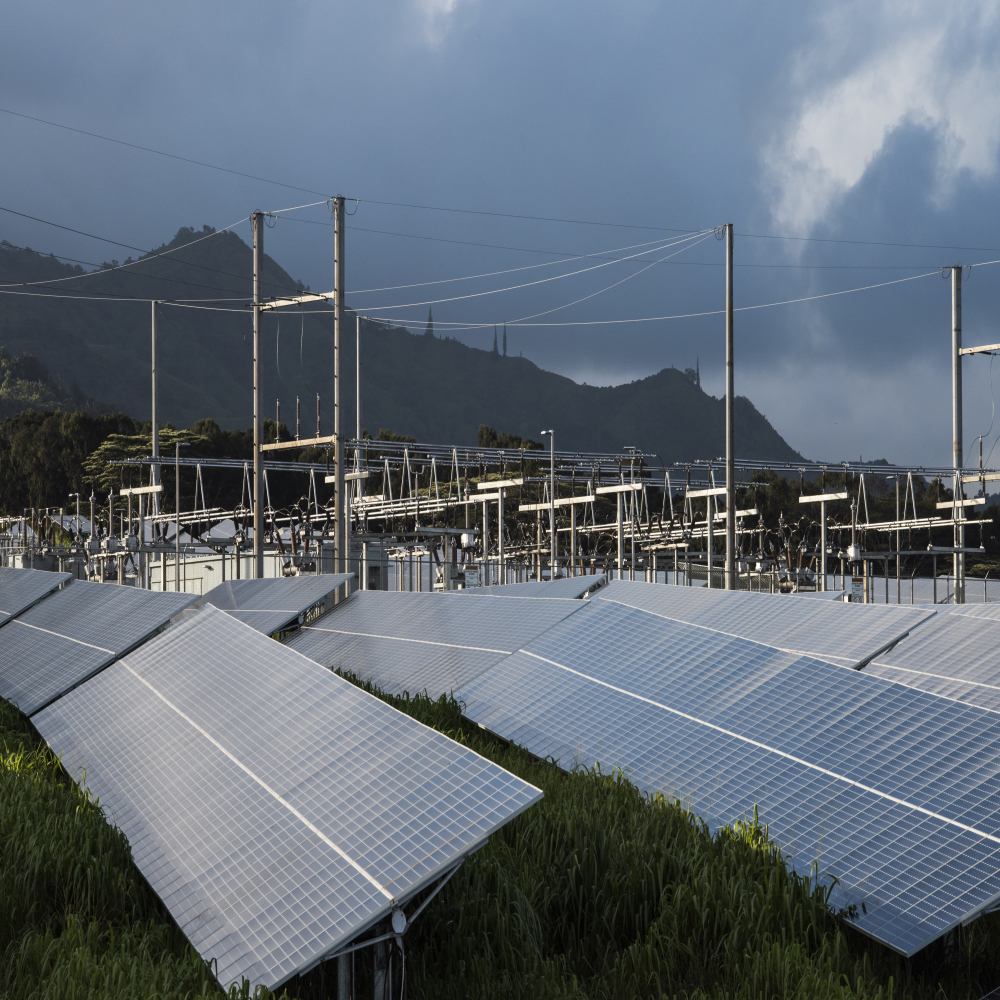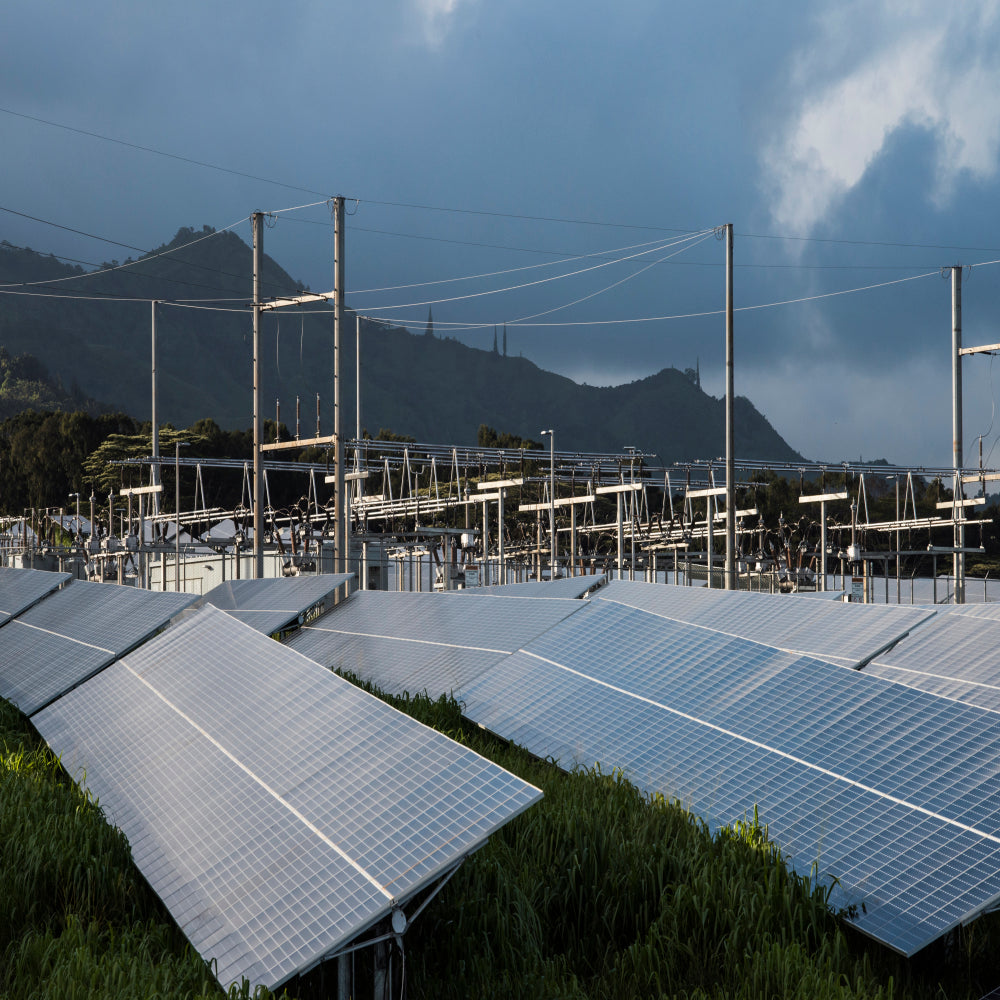https://pv-magazine-usa.com/2023/02/01/global-energy-industry-is-at-an-inflection-point-said-utility-representative/
Global energy industry is at an inflection point, said utility representative

Image: Dennis Schroeder / NREL
In a recent interview in Electric Perspectives, Edison Electric Institute (EEI) Chair Warner Baxter explored how the global “polycrisis” presents an inflection point that the global energy industry can rally around.
From the COVID-19 pandemic, the war in Ukraine triggering energy and food prices to soar, and rising inflation causing a cost-of-living crisis, among many others, historians claim the world today faces a polycrisis. These effects are compounded such that their overall impact exceeds the sum of each part. As the recent World Economic Forum Global Risks Perception Survey highlights, issues of energy and the growing pressure of climate change are the primary focus.
EEI, where Baxter serves as chairman, is the trade association that represents all U.S. investor-owned electric companies that are responsible for providing electricity for more than 235 million Americans.
Summing up his first six months in his role at EEI, Baxter noted the common theme is that “extensive and genuine collaboration within the industry and with key stakeholders delivers significant benefits for our customers, our communities, and our country.”
These recent collaborations include advocating for new legislation on clean energy tax credits, responding to Hurricane Ian to restore power and recent multinational discussions between energy industry CEOs about more effective collaborations in the future. Baxter argued this spirit of collaboration is increasingly important amidst an “unprecedented time” in the energy industry’s history.
Unpacking what he meant by “unprecedented time,” Baxter explained that the war in Ukraine showed how energy can be used as a weapon, in addition to causing volatility in fuel supplies and energy prices, and impacting global supply chains. Russia’s invasion of Ukraine has shown the need “to take strong actions to enhance the nation’s energy security,” Baxter argues, amidst a changing cyber and physical threat landscape.
At the same time, climate change is contributing to more extreme weather events, which requires a greater focus on grid reliability and resilience. Lastly, Baxter expounded on how record levels of inflation are contributing to rising cost-of-living expenses as customers struggle with higher energy costs.
When asked what EEI is doing to address these issues, Baxter highlighted how the clean energy transition can operate as an axis for an array of complementary benefits. Transitioning to clean energy and advancing energy resilience, grid reliability, and customer affordability are not new areas of focus for EEI. Just as many of these issues are linked, their solution is as well.
Baxter argues that “executing critical investments in the clean energy transition” helps address all these issues, along with future climate change-induced impacts. However, Baxter notes “the velocity and significance of these issues all hitting at the same time” have caused a shift in how the entire industry strategizes.
When asked to expand upon what the industry is doing to address the clean energy transition, Baxter mentioned how EEI has fully committed to delivering clean energy and nearly all EEI member companies have implemented plans to achieve net-zero emissions by 2050. Baxter argues this is not just empty promises but is backed by “substantial investments in renewable energy, battery storage, existing and new nuclear energy, natural gas, new clean energy technologies, and transmission.” Part of this effort involves EEI advocating for federal and state energy policies like the Bipartisan Infrastructure Law, and the Inflation Reduction Act.
When asked what EEI members are doing to address customer affordability, Baxter highlighted several of the energy efficiency and energy assistance programs that EEI member companies offer. Baxter notes that Ameren Missouri created the Clean Slate Program to help eligible customers clear past-due balances and start fresh. The program is aimed at filling the gap for those who do not qualify for existing federal and state assistance. Lastly, Baxter notes that the Low-Income Home Energy Assistance Program (LIHEAP), a federal program that assists low-income households with paying their energy bills, recently received significant funding from Congress.
Baxter said it is critical that EEI members ensure their “customers have awareness and access to these critical programs,” as cost-of-living expenses continue to rise. For example, recent data from the U.S. Census Bureau Household Pulse Survey found that 24.75% of U.S. households reduced or forwent expenses for basic household necessities in order to pay for energy.
In conclusion, Baxter argues that the industry must not shy away from today’s challenges. “We are leaning into them because we see today as an important inflection point for the electric power industry,” Baxter said. As the backbone behind much of the country’s energy infrastructure, EEI’s strategy will be integral to this inflection point.
This content is protected by copyright and may not be reused. If you want to cooperate with us and would like to reuse some of our content, please contact: editors@pv-magazine.com.



